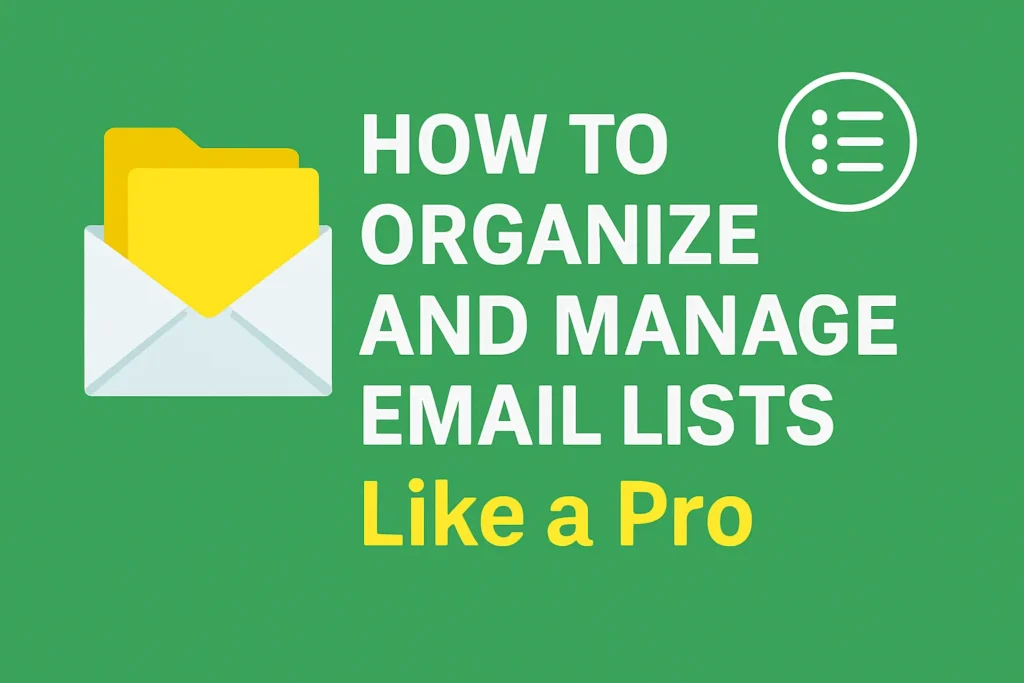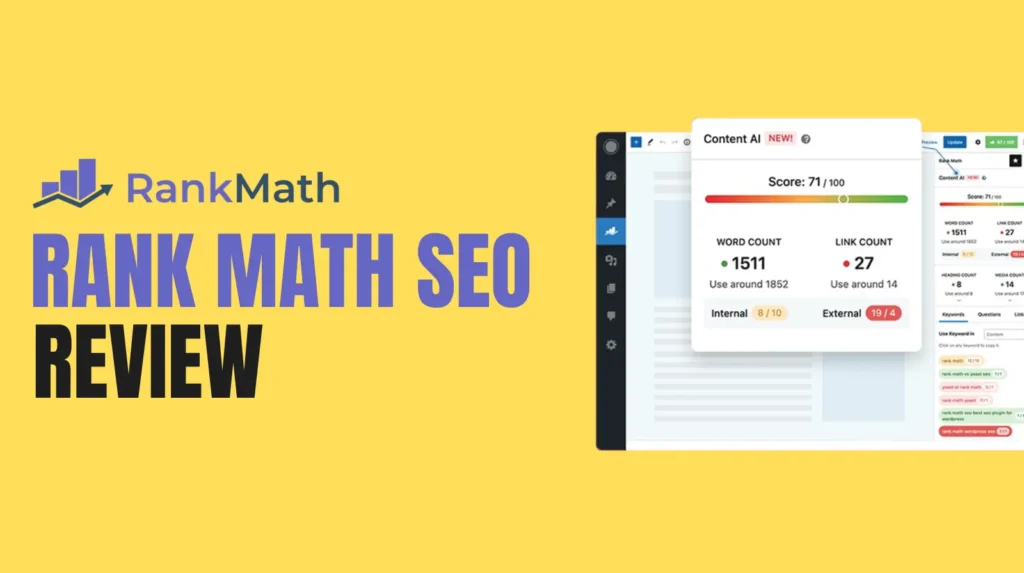Managing email lists effectively is the backbone of successful email marketing. Whether you are a small business owner, a marketer, or a blogger, learning how to manage email lists can boost your campaigns and build stronger connections with your audience. In this guide, we will walk you through practical email marketing tips to organize and manage email lists like a pro, ensuring your campaigns are efficient, targeted, and compliant. Let us dive into the essentials of email list management to help you achieve better engagement and conversions.
Why Managing Email Lists Matters
A well-organized email list is more than just a collection of email addresses. It is a powerful tool for delivering personalized content, nurturing leads, and driving sales. Poorly managed email lists can lead to low open rates, high unsubscribe rates, and even damage your sender reputation. By applying email marketing tips to manage email lists, you can improve deliverability, increase engagement, and maximize your return on investment.
The Benefits of a Clean Email List
A clean and organized email list offers several advantages. It ensures your emails reach the right people, reduces bounce rates, and keeps your campaigns compliant with regulations like GDPR and CAN-SPAM. Additionally, a well-segmented list allows you to send targeted content, which can lead to higher open and click-through rates. Let us explore how to achieve these benefits with practical strategies.
Getting Started with Email List Management
Before diving into advanced techniques, let us cover the basics of how to manage email lists. These foundational steps will set you up for success and make your email marketing efforts more effective.
Build Your List Organically
The first step to manage email lists is to build them the right way. Always use opt-in methods to collect email addresses, such as sign-up forms on your website, lead magnets, or pop-ups. Avoid purchasing email lists, as they often contain outdated or unengaged contacts, which can harm your sender reputation. Organic growth ensures your subscribers are genuinely interested in your content.
Use a Reliable Email Marketing Platform
To manage email lists efficiently, invest in a reputable email marketing platform like Mailchimp, Constant Contact, or Brevo. These tools offer features like list segmentation, automation, and analytics, making it easier to organize and track your campaigns. Choose a platform that aligns with your business needs and budget.
Verify Email Addresses
Email verification is a critical step in managing email lists. Use tools to validate email addresses and remove invalid or fake ones. This reduces bounce rates and ensures your emails reach real people. Regular verification keeps your list clean and improves deliverability.
Segmenting Your Email Lists for Better Results
Segmentation is one of the most powerful email marketing tips for managing email lists. By dividing your list into smaller groups based on specific criteria, you can send more relevant content to your subscribers.
Why Segmentation Works
Segmented email campaigns perform better because they deliver tailored content to specific audiences. For example, a clothing brand might segment its list by gender, purchase history, or location to send personalized offers. Segmentation can increase open rates by up to 30 percent and boost conversions significantly.
How to Segment Your Email Lists
To manage email lists effectively, segment them based on factors like demographics, behavior, or engagement levels. Here are some common segmentation strategies:
Demographic Segmentation
Group subscribers by age, gender, location, or job role. This helps you create content that resonates with specific audiences.
Behavioral Segmentation
Segment based on actions like website visits, purchase history, or email opens. For example, send a discount code to subscribers who abandoned their shopping carts.
Engagement Segmentation
Identify active, inactive, or new subscribers. Re-engage inactive users with win-back campaigns or welcome new subscribers with onboarding emails.
Use your email marketing platform to set up these segments and automate the process. Regularly review and update your segments to keep them relevant.
Keeping Your Email Lists Clean
A clean email list is essential for maintaining high deliverability and engagement. Regular maintenance is one of the key email marketing tips to manage email lists effectively.
Remove Inactive Subscribers
Inactive subscribers can drag down your campaign performance. Identify users who have not opened or clicked your emails in the past six months and consider removing them. Alternatively, run a re-engagement campaign to win them back before unsubscribing them.
Handle Bounces Promptly
Bounces occur when emails cannot be delivered due to invalid addresses or full inboxes. Monitor hard bounces (permanent failures) and soft bounces (temporary issues) in your email marketing platform. Remove hard bounces immediately to keep your list clean.
Manage Unsubscribes Gracefully
Make it easy for subscribers to unsubscribe with a clear link in every email. This not only complies with regulations but also ensures your list only includes engaged users. Analyze unsubscribe data to identify patterns and improve your content.
Automating Email List Management
Automation is a game-changer for managing email lists. By setting up automated workflows, you can save time and deliver timely, relevant content to your subscribers.
Set Up Welcome Emails
A welcome email is the perfect way to introduce new subscribers to your brand. Automate a welcome series that includes a thank-you message, an introduction to your business, and a special offer. This sets a positive tone and encourages engagement.
Use Drip Campaigns
Drip campaigns are automated sequences of emails sent based on subscriber actions or schedules. For example, a drip campaign for new subscribers might include educational content, product highlights, and a discount code. Drip campaigns nurture leads and keep your audience engaged.
Automate List Cleaning
Many email marketing platforms offer tools to automate list cleaning. Set up rules to remove inactive subscribers, flag bounces, or update contact information. Automation ensures your list stays clean without manual effort.
Complying with Email Marketing Regulations
Compliance is a critical aspect of managing email lists. Failing to follow regulations can result in fines and damage to your reputation.
Understand GDPR and CAN-SPAM
GDPR (General Data Protection Regulation) and CAN-SPAM Act set rules for email marketing. GDPR requires explicit consent for collecting and using personal data, while CAN-SPAM mandates clear unsubscribe options and accurate sender information. Familiarize yourself with these laws to stay compliant.
Use Double Opt-In
Double opt-in requires subscribers to confirm their email address after signing up. This ensures you have explicit consent and reduces the risk of spam complaints. Most email marketing platforms support double opt-in functionality.
Keep Records of Consent
Maintain records of how and when subscribers joined your list. This is crucial for proving compliance during audits. Your email marketing platform should track consent automatically.
Analyzing and Optimizing Your Email Lists
To manage email lists like a pro, regularly analyze your campaign performance and optimize your strategies.
Track Key Metrics
Monitor metrics like open rates, click-through rates, bounce rates, and unsubscribe rates. These insights reveal how well your email lists are performing and where improvements are needed.
A/B Test Your Campaigns
A/B testing involves sending two versions of an email to see which performs better. Test elements like subject lines, content, or send times to optimize your campaigns. Use the results to refine your approach.
Revisit Your Segmentation
As your audience grows, their preferences may change. Periodically review your segments and adjust them based on new data. This keeps your content relevant and engaging.
Email Marketing Tips for Long-Term Success
To sustain your email list management efforts, adopt these email marketing tips for long-term success.
Provide Value in Every Email
Always deliver valuable content, whether it is educational, entertaining, or promotional. Valuable emails build trust and keep subscribers engaged.
Maintain Consistent Branding
Use consistent branding in your emails, including your logo, colors, and tone of voice. This creates a professional image and reinforces your brand identity.
Stay Updated on Trends
Email marketing evolves constantly. Stay informed about new tools, strategies, and regulations to keep your campaigns effective. Subscribe to industry blogs or attend webinars to stay ahead.
Conclusion
Learning how to manage email lists is a skill that pays off in better engagement, higher conversions, and a stronger brand reputation. By building your list organically, segmenting effectively, keeping it clean, and automating processes, you can organize and manage email lists like a pro. Combine these strategies with compliance and regular optimization to ensure your email marketing campaigns thrive. Start implementing these email marketing tips today and watch your email lists become a powerful asset for your business.
Frequently Asked Questions
Why is managing email lists important for small businesses?
Managing email lists ensures your emails reach engaged subscribers, improves deliverability, reduces bounce rates, and helps you comply with privacy laws like GDPR and CAN‑SPAM. It directly impacts engagement and campaign ROI.
How can I keep my email list clean and up to date?
Regularly remove inactive subscribers, verify addresses, and handle hard bounces promptly. Use your email marketing platform’s automation tools to clean lists automatically and maintain healthy engagement rates.
What are the best ways to segment an email list?
Segment by demographics (age, location), behavior (purchase history, website visits), and engagement (active or inactive users). This helps deliver personalized content that drives higher open and click‑through rates.
What tools help manage email lists effectively?
Platforms like Brevo, Mailchimp, Constant Contact, and HubSpot simplify list management. They include features for segmentation, automation, analytics, and compliance tracking—all essential for effective campaigns.
How can automation improve email list management?
Automation saves time by cleaning lists, sending welcome or drip campaigns, and re‑engaging inactive users. It keeps your audience organized, ensures timely communication, and boosts long‑term engagement.








